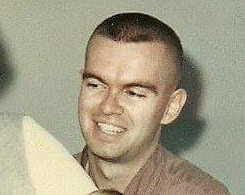A number of years ago (I can't even guess how many.), my ophthalmologist informed me that I had a condition in both eyes called Fuchs' Dystrophy. The good folks at the Mayo Clinic describe the condition this way, "In Fuchs' (fewks) dystrophy, fluid builds up in the clear layer (cornea) on the front of your eye, causing your cornea to swell and thicken. This can lead to glare, blurred or cloudy vision, and eye discomfort.
"Fuchs' dystrophy usually affects both eyes and can cause your vision to gradually worsen over years. Typically, the disease starts in the 30s and 40s, but many people with Fuchs' dystrophy don't develop symptoms until they reach their 50s or 60s.
"Some medications and self-care steps may help relieve your Fuchs' dystrophy signs and symptoms. But when the disorder is advanced and your vision is affecting your ability to function well, the best way to restore vision is with cornea transplant surgery."
Gradually, the effects of this condition have become more pronounced and onerous. A few weeks ago, during a regularly-scheduled exam, I told my doctor that I'd like to consider a surgical remedy. He informed me that during the years since I was initially diagnosed, some new techniques had been developed for dealing with the condition. There happen to be a couple of expert corneal surgeons in Birmingham whom he would be happy to refer me to.
Thus it was that last Wednesday I drove to Sheffield, Alabama, to meet with Dr. Jack Parker, M.D. and Ph.D. Dr. Parker is the son of a father-son surgical team specializing in corneal surgery. Dr. Parker's credentials are impressive, as described on the Parker Cornea Website: "Jack Parker is considered one of the world’s foremost authorities on the treatment of keratoconus and Fuchs dystrophy. He is currently the only U.S. eye surgeon fellowship trained at NIIOS–the Dutch institution that developed modern corneal lamellar surgery (DMEK, DSEK, and Bowman layer transplantation).
During medical school and residency at UAB, Jack collaborated with world renowned corneal surgeon Gerrit Melles of Rotterdam. Following completion of a UAB ophthalmology residency, Jack completed a joint fellowship with NIIOS in Rotterdam and his father at Parker Cornea in Birmingham. Jack’s PhD thesis Recent Innovations in Minimally Invasive Anterior and Posterior Lamellar Keratoplasty was co-promoted by Dr. Melles and Dr. Martine Jager and was accepted by Leiden University on July 4, 2017. Jack currently serves on the board of Directors of NIIOS USA."
Needless to say, I feel extremely fortunate to have made contact with such a highly qualified practitioner. He greeted me most cordially on Wednesday and then examined my eyes. He confirmed that I have a mature case of Fuchs, but the good news is that my corneas are not yet scarred (a condition that can result if the disease progresses long enough). He suggested that I would benefit from a procedure called Descemet Membrane Endothelial Keratoplasty (DMEK). In this process, the back layer of cells on the cornea is removed, after which the same layer of cells (called the Descemet membrane and endothelium) from a donor cornea is implanted on the back of my cornea. Talk about micro-surgery! Sources on the internet describe the procedure in much more academic terms, "DMEK is a partial-thickness cornea transplant procedure that involves selective removal of the patient's Descemet membrane and endothelium, followed by transplantation of donor corneal endothelium and Descemet membrane without additional stromal tissue from the donor. The graft tissue is merely 10-15 microns thick. Similar to DSAEK, direct contact with the DMEK graft tissue should be avoided to prevent endothelial cell damage and graft failure. A clear corneal incision is created, the recipient endothelium and Descemet membrane are removed, and the graft is loaded into an inserter. After injecting the tissue into the anterior chamber, the surgeon orients and unscrolls the graft, and a bubble of 20% sulfur hexafluoride (SF6) is placed in the anterior chamber to support graft adherence. A variation known as Descemet membrane automated endothelial keratoplasty (DMAEK) utilized an automated preparation of the donor tissue that left a rim of donor stroma peripherally for easier tissue handling, but the procedure is no longer performed due to advances in DMEK that have allowed for easier insertion and manipulation of the graft tissue."
There's a really informative animation of the procedure at https://youtu.be/7Ai8PxaXE2s
Dr. Parker suggested that we start with my right eye, which would benefit the most in visual acuity. Today, I had a call from his scheduler and I'm scheduled to have the first procedure on Tuesday, July 6th. I'm really excited.
Reading the comments from people who have undergone this surgery is enlightening and encouraging. People talk about almost instant results, "miraculous" changes in clarity of vision, and amazing changes in color perception. I'm incredibly grateful that we have such procedures and dedicated specialists available in my lifetime. Recovery will take about a month before we repeat the process on my left eye.




